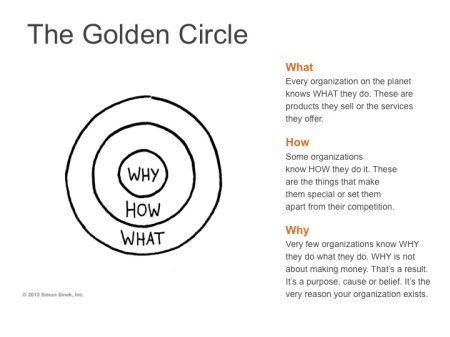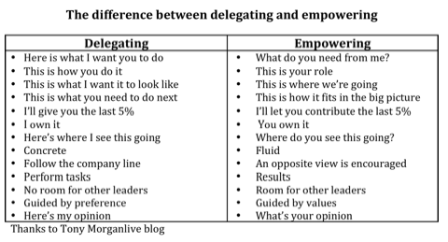In 2008, former CEO of Medtronic and current Harvard Business School Professor, Bill George presented his thoughts on leadership and what makes a good leader to Google employees as part of the Google leadership series. Delivered 2 years ago in the early days of the most dramatic economic crisis since the great depression of 1929, the arguments Bill George presented in his speech then are even more relevant today, now that we are even clearer on the human, economic, industrial and financial consequences of a crisis brought about the reckless behavior of a few financial institutions “too big to fail”.
Bill George indeed begins by stating the obvious : the financial crisis is also a leadership crisis because it was brought about by individuals who preferred short-term, personal, gains to long-term organizational goals. For Bill George, organizations have been choosing the wrong people for positions of responsibility for too long and charisma has taken precedence over personal integrity and the desire to put collective before personal goals.
Basically, organizations have been choosing takers and not givers and examples abound of individuals who succeeded in the short-term but who put their organizations in dire circumstances in the long-term (only they weren’t there to take the blame). Given the consequences of the crisis we are now enduring, it is easy to understand why so many people may have lost all confidence in the whole idea of leadership and this crisis of confidence makes Bill George’s ideas even more relevant for anyone seeking to develop effective performance in organizations today.
For Bill George, leadership cannot be equated with the simple wielding of power or being able to command others to do one’s bidding. Leadership is about responsibility to others and to the organization and being conscious of the impact of one’s decisions on the well-being of the organization and of its members.
For Bill George, as for Peter Drucker, the old hierarchical, leader-follower, top-down, command-and-control, management model has failed and cannot work in today’s global, flexible, high tech organizations staffed by highly educated, white collar workers. Knowledge workers do not respond to command and control management techniques and as they often know more than their bosses, refuse to be dictated to in the way blue-collar workers once were. Hungry to maintain their expertise, knowledge workers expect more opportunities and won’t wait in line patiently for promotion or new roles, preferring to move on if necessary to develop their careers and expertise. Finally, money is no longer a key motivator and as we all spend most of our time at work, we need to find purpose and meaning in what we do at work. If we can’t find that purpose or if leaders can’t help us find that purpose and meaning, we will become disengaged and demotivated.
So leaders today need to be attentive to 4 key drivers of performance and engagement:
1) Alignment: as people need to find meaning and purpose in what they do, leaders need to be able to align employees in their organization around a common mission and set of values. Team members will be more engaged if they adhere to the organization’s mission and if they can identify with the values espoused by the organization they belong to. A clear mission is a magnet that attracts employees and allows them to work together as a team effectively. Neglect your mission statement and you run the risk of disengaging many of your employees.
2) Empowerment: leaders are not defined by the power they wield but by how they empower others to act effectively. In many organizations today, the people with most influence are not those with the most power. Leaders need to be able to recognize this and ensure that those with most influence and expertise are empowered to use that expertise and influence effectively. Empowerment is key to the sustainable development of all high tech organizations today because as Bill George points out, the key to sustainable development is innovation and creativity, which in turn depends on a corporate culture that frees up talent and allows employees to take measured risks to develop new and innovative products. The larger the organization however, the greater the risk of a command-and-control organization taking over as the organization struggles to maintain coherence through the application of rigid rules and procedures. The best way to counteract such a counter-productive culture is to try to segment the organization into small, flexible units that allows for more creativity and innovation.
3) Customer service: for too long, the message from the financial sector has been that creating share-holder value is the ultimate goal of any corporation but as Bill George points out, any organization which has this as a goal is doomed to fail because the only way to provide share-holder value is by providing customer service and by providing the products and services the customer wants. Organizations will only be ultimately successful if they meet their customers’ needs.
4) Collaboration: the challenges facing all organizations today are complex and require unique collaborative skills within and outside the organization. No organization today is strong enough to stand alone and must be able to foster effective cross-functional team work with and effective collaboration with different organizations in the community at large.
So with these four key requirements in mind, Bill George looks at the leadership question and asserts that leadership concerns us all because each of use in our own way can make a difference, not in a history making way like Nelson Mandela, but in a very simple way at our own personal level by the way we interact with our own environment.
Bill George delivers a very personal message because when he says that we can all make a difference, he challenges us all to discover what makes us passionate and once we have made that discovery, to plot our lives aligned to that passion. Bill George urges us all to use our life to make a difference and this is what real leadership is about: making a difference. Personal values are therefore at the centre of Bill George’s views on leadership.
How can one develop such value-centered leadership and make a personal difference at our own individual level?
Bill George defines 5 principles of value-centered leadership:
1) Know yourself and this means developing your self-awareness. Leadership does not come from the outside but from the inside, is about the person and we can all be leaders in our own way providing we know who we are, what we stand for, where we want to go, what our strengths are, what our motivations are, what positive forces driving us are. To develop our self-awareness, getting good feedback is vital: from peers, subordinates, bosses,etc…
2) Know your values and base your actions on your values. As you progress your career, you will be more and more confronted by difficult and ambiguous situations and your ability to decide effectively will depend on how clear you are on what you can and cannot do as per your set of personal values.
3) Know what your sweet spot is and strive to find a role in the organization which centres on this sweet spot. Bill George defines your sweet spot as the coming together of your intrinsic motivations with your capabilities. Our intrinsic motivations are those fundamental motivations that satisfy us and drive us on and are different from the official motivations such as earning more money or being promoted. If we can manage to match our intrinsic motivations and our capabilities in an organizational role, we will increase our chances of being more effective. Traditional management approaches look on individuals in terms of strengths and weaknesses and try to match these strengths and weaknesses of an individual with particular organizational roles. Bill George, however, believes that it is much more effective for an individual to undestand what his/her intrinsic motivations are, what his/her capabilities are and then seek out an organizational role which allows the individual to optimize those intrinsic motivations and capabilities. Find a role that allows you to play to your strengths so that your weaknesses are irrelevant.
4) Build a team around you that will give you good and unbiased feedback. Others can help us improve and it’s important to put in place different ways of sharing ideas with others. Bill George mentions having a mentor or creating a support group as two ways of getting such feedback and providing mutual help. Professional life has many ups and downs and others can help us adopt the strategies to survive the storms of professional life.
5) Lead an integrated life: rather than trying to develop specific behaviors for work and other specific behaviors more suited to your private life, try to live an integrated life and be the same person wherever you are, whatever environment you are in. If the gap is too wide between the persona you adopt in an organization and your private life, this quite often can have a negative impact on your sense of integrity. This of course means knowing what your values are, living by those values and taking decisions according to those values.
For Bill George, if you follow these 5 principles, you will be an integrated leader. These 5 principles act as a leadership compass and will help you to go in the direction you want to go and help you be true to your personal direction. If you do so, you will be true to yourself and have a better chance of being true to others. More than 2000 years ago, the Roman statesman, Seneca, stated that “no wind is favorable to he who knows not where he is going” and in those tumultuous times, Seneca was delivering the same message as Bill George today: you cannot perform effectively if you don’t have a clear personal sense of direction. You must know where you want to go in life, what your values are, what motivates you to get up in the morning, what makes you passionate, what you will do and what you won’t do if you want to be able to lead and work effectively with others.
Develop your own personal leadership compass-without it, you wil get lost as many individuals seem to have done when we consider the events which have led us to where we are today in the midst of the worst financial crisis since 1929. View Bill George speaking at Google University by clicking on the link below.
Bill George: finding your True North
You can also discover Bill George discussing what it takes to build sustainable growth and performance by viewing the video








